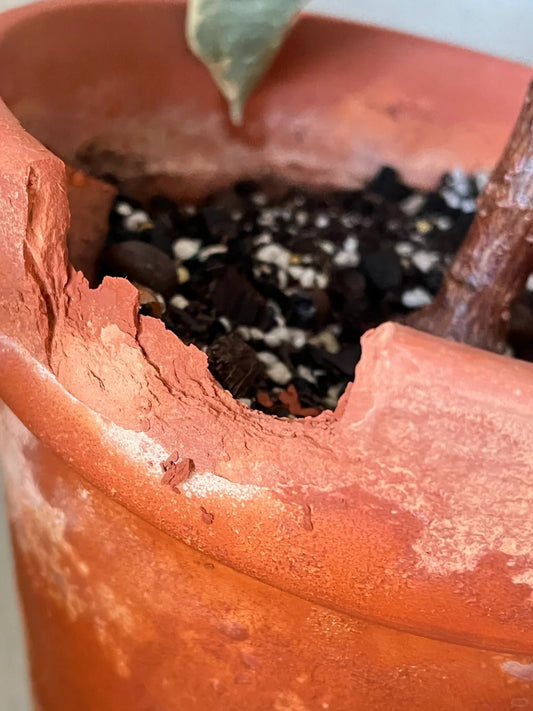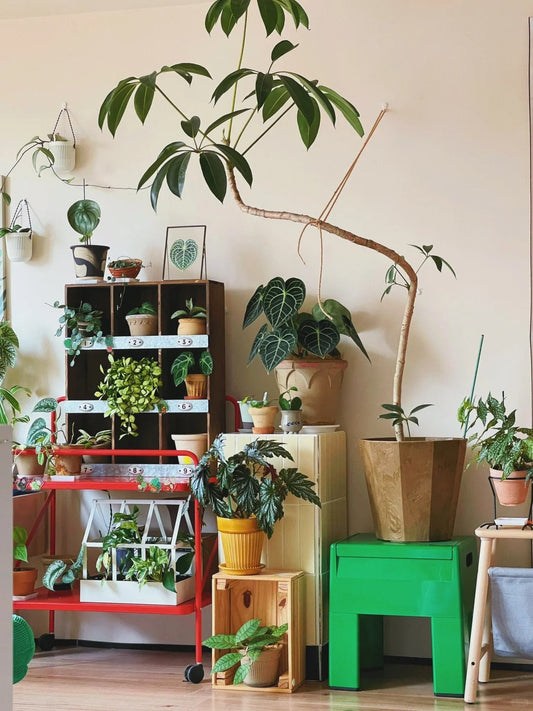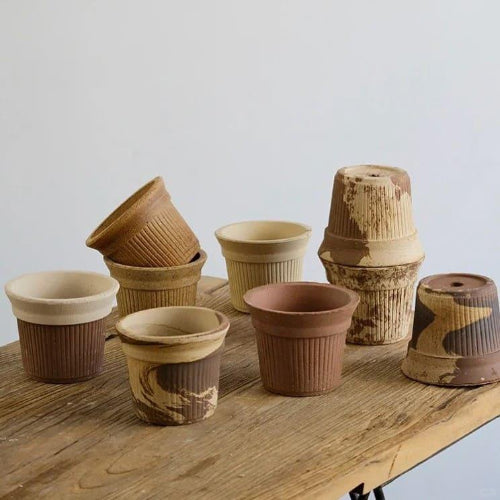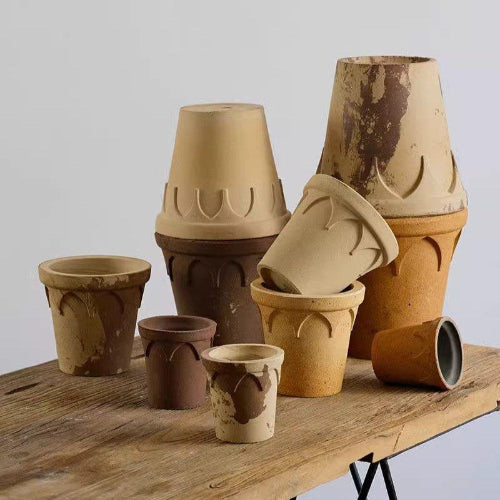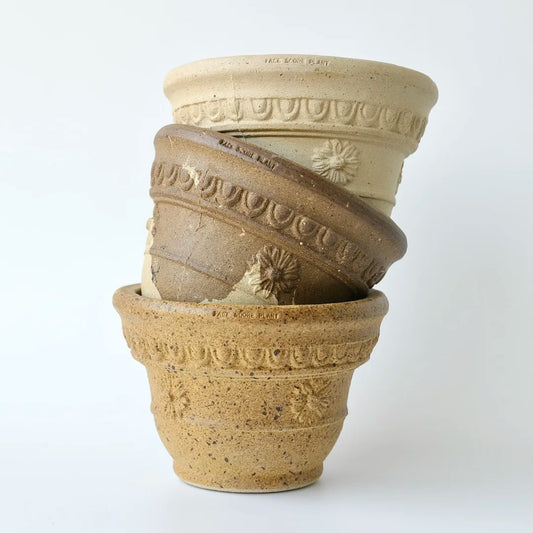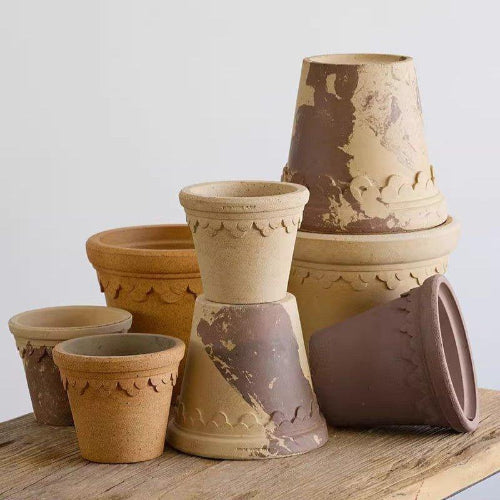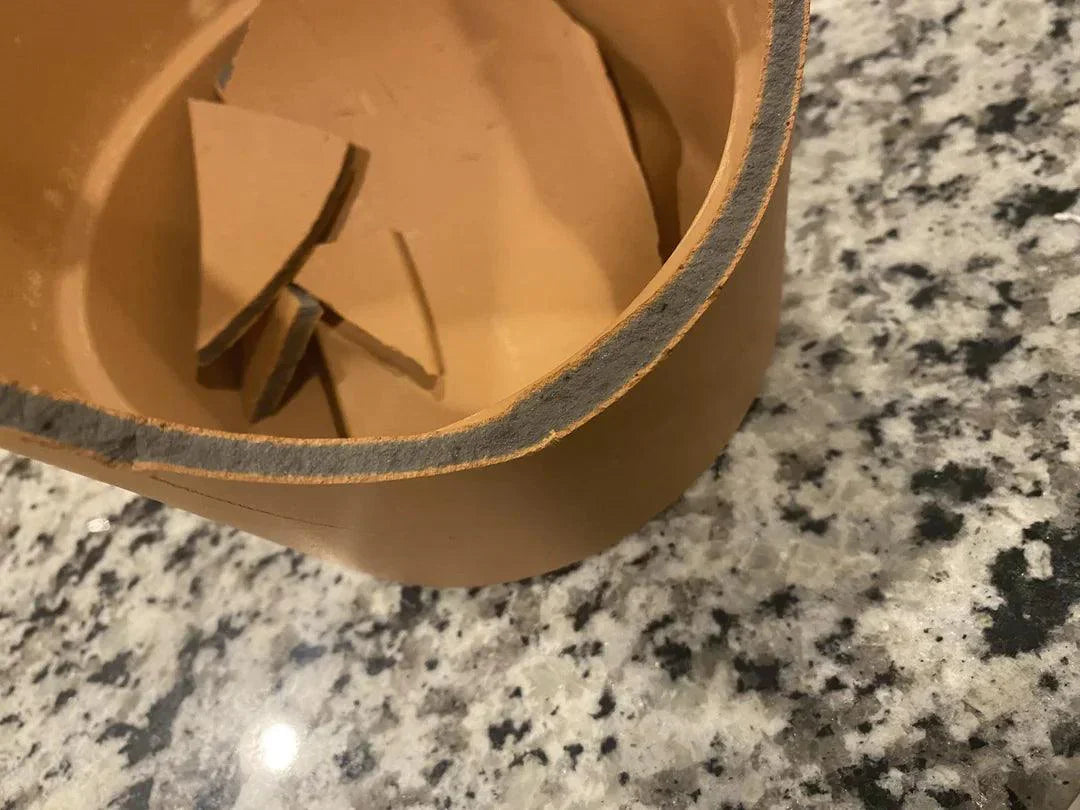
The Truth About Faux Terracotta Pots: Why Genuine Terracotta Pots Stands Out
Terracotta pots have long been a favorite for their natural aesthetics and plant-friendly properties. However, with the influx of faux terracotta pots made from materials like magnesium oxide (MgO) and cement, it’s important to understand the key differences. While these alternatives may offer certain advantages, they come with significant downsides that can impact both the pots’ durability and the health of your plants.
Faux Terracotta Pots: Magnesium Oxide (MgO) and Cement
Magnesium Oxide (MgO) Pots:
MgO pots are crafted by mixing magnesium oxide with brine, along with modifiers. This mixture is then applied to glass fiber mesh to form various shapes. These pots are known for being affordable, versatile, and environmentally friendly.

-
Advantages:
- Low Cost and Variety: MgO pots are inexpensive and come in a wide range of shapes, sizes, and colors.
- Customizable: The material allows for the creation of pots in various designs and colors.

-
Disadvantages:
- Lack of Breathability: Unlike genuine terracotta, MgO pots do not allow air and moisture to pass through, which can lead to waterlogging and root rot.
- Brittle Over Time: Despite being durable initially, MgO pots can become brittle with prolonged exposure to temperature changes, leading to cracks.
- Surface Aging: Over time, MgO pots may lose their visual appeal as they develop surface flaws and discoloration.
Cement Pots:
Cement pots are another popular imitation due to their sturdiness and ability to hold larger plants.
- Advantages:
-
- Strong and Stable: Cement pots are heavy, providing stability and support for larger plants.
- Disadvantages:
-
- Excessive Weight: Cement pots are heavy and difficult to move, limiting their versatility, especially indoors.
- Heat Retention: Cement pots retain heat for extended periods. In summer, prolonged exposure to sunlight can cause the pot to overheat, damaging the plant’s roots.
- Slow Cooling: The slow dissipation of heat can create unfavorable conditions for plant roots during hot weather.
- Cracking and Aging: Cement pots are prone to developing cracks over time, especially in areas with fluctuating temperatures or high moisture levels, and their aesthetic appeal diminishes as they age.
- Toxic Reactions: Cement pots contain high levels of lime. Over time, this lime can react with plants, fertilizers, and water, producing toxic substances that may harm the plants.
The Black Core Issue in Some Terracotta Pots
While faux terracotta pots have their downsides, even some genuine terracotta pots are not without flaws. One such issue is the black core—a problem that occurs when the firing process is inadequate.
Black core happens when organic materials in the clay aren’t fully burned out due to insufficient firing temperatures or times. This leaves a dark, brittle core within the pot. Over time, exposure to moisture can exacerbate this weakness, leading to cracks and structural failure. It’s crucial to note that this issue is not caused by coating cement pots with a terracotta-like finish but is instead a flaw in the clay firing process.

Why Choose Claywares Genuine Terracotta Pots
At Claywares, we focus on creating high-quality terracotta pots that are not only visually appealing but also built to last. Here’s why our pots are a cut above the rest:
- Authentic Terracotta Material: Our pots are made from premium terracotta clay, ensuring a consistent, natural color both inside and out.
- High-Temperature, Slow Firing: We fire our pots slowly at high temperatures, completely eliminating the risk of black core. This ensures a sturdy, durable pot that will stand the test of time.
- Breathability: Unlike faux alternatives, our terracotta pots allow for natural air and moisture exchange, promoting healthy root systems and preventing root rot.
- Durability and Longevity: Designed to endure, our pots are resistant to cracking and maintain their aesthetic appeal even after years of use.
- Eco-Friendly: Made from natural materials, our pots support sustainable gardening practices.



Conclusion
While faux terracotta pots made from MgO and cement may seem appealing for their affordability and variety, their drawbacks—such as poor breathability, brittleness, and heat retention—can negatively impact plant health and pot longevity. Claywares’ genuine terracotta pots offer the perfect combination of durability, functionality, and timeless beauty. Choose Claywares for a pot that supports your plants and enhances your space for years to come.

